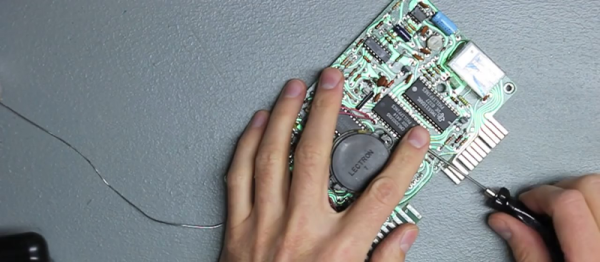How many Arduini does it take to make a tiny CRT Asteroids game? [Marco Vallegi] of MVV Blog’s answer: two. One for the game mechanics and one for the sound effects. And the result is a sweet little retro arcade machine packed tightly into a very nicely 3D printed case.
If you want to learn to curse like a Tuscan sailor, you can watch the two-part video series, embedded below, in its entirety. Otherwise, we have excerpted the good stuff out of the second video for you.
For instance, we love the old-school voice synthesis sound of the Speak and Spell. Here, playback is implemented using the Talkie library for Arduino, and [Marco] is using the BlueWizard software on a dated Macbook for recording and encoding. (We’d use the more portable Python Wizard ourselves.) Check out [Marco] tweaking the noise parameters here to get a good recording.
And since the Talkie Arduino library uses PWM on a digital output pin to create the audio, the high-frequency noise was freaking out his simple transistor amplifier. Here, [Marco] adds a feedback capacitor to cancel that high-frequency hash out.
The build needs to be quite compact, and the stacked-Arduino-with-PCB-case design is tight. And the 3D-printed case has a number of nice refinements that you might like. We especially like the use of thin veneers that cover the case all around with the build-plate’s surface texture, and the contrasting “Asteroids” logos are very nice.
All in all, this is a really fun build that’s also full of little details that might help you with your own projects. Heck, even if it just encourages you to play around with the Talkie library, it’s worth your time in our opinion. And while you’re at it, you can turn on the subtitles and pick up some vocab that’ll make your nonna roll over in her grave.
Continue reading “Tight Handheld CRT Asteroids Game Curses In Tuscan”















